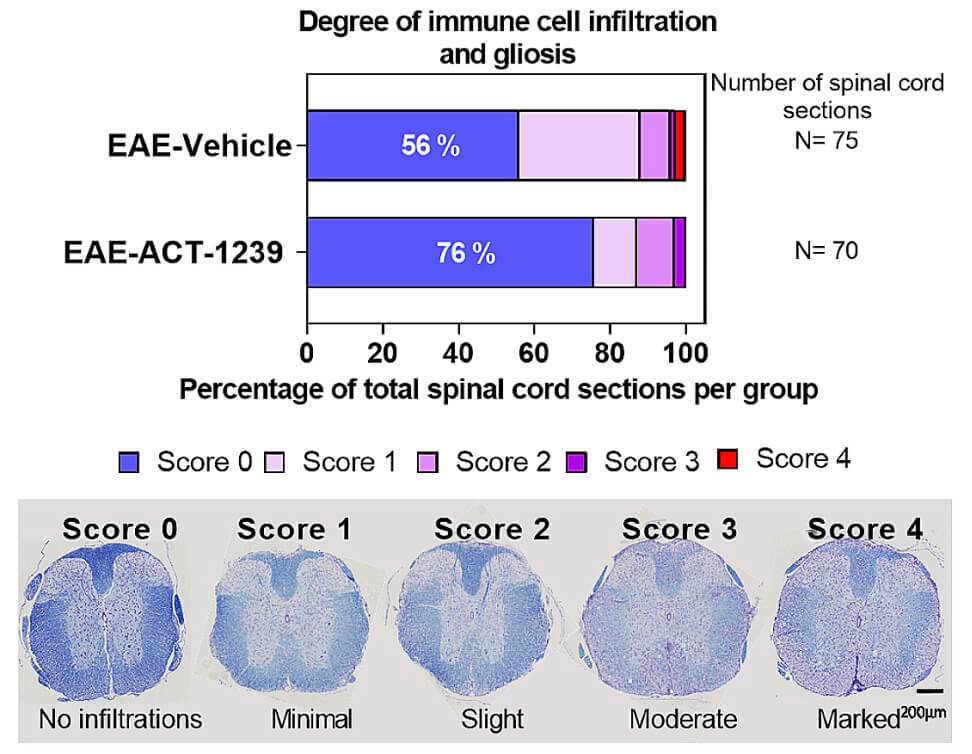PLP induced EAE Mouse Modeling & Pharmacodynamics Service
As one of the most trustworthy research partners with great customer satisfaction, Creative Biolabs is proud to provide worldwide clients with excellent animal model services from model selection, model creation to experimental design, data collection, and analysis. Particularly, our multiple sclerosis (MS) model platform offers various EAE models induced by myelin peptides including proteolipid protein (PLP), myelin oligodendrocyte glycoprotein (MOG), and myelin basic protein (MBP).
Introduction of PLP
The most commonly used antigens in rodent models of EAE are spinal cord homogenate (SCH), purified myelin, myelin protein such as MBP, PLP, and MOG, or peptides of these proteins, all resulting in distinct models with different disease characteristics regarding both immunology and pathology. Depending on the antigen used and the genetic makeup of the animal, rodents can display a monophasic, relapsing-remitting, or chronic EAE.
PLP is the predominant myelin protein presented in the central nervous system (CNS), functioning in myelination. Peptide fragments of the myelin protein of PLP, such as 139-151 peptide and 178-191 peptide, are encephalitogenic to certain mice strains. PLP injected in Swiss Jim Lambert (SJL) mice together with pertussis toxin (PT) will lead to a remitting-relapsing (RR) demyelinating disease, making it a suitable model for studies of efficacy.
 Fig. 1 Representative images of spinal cord sections from PLP-induced EAE model stained with Cresyl Violet and Luxol Fast Blue. 1
Fig. 1 Representative images of spinal cord sections from PLP-induced EAE model stained with Cresyl Violet and Luxol Fast Blue. 1
Model Description
Typically, EAE can be induced in SJL strain mice by immunizing the PLP139-151 sections, together with PT, which usually leads to a chronic disease from which the mice never recover and has a relapsing-remitting pattern similar to that of the major form of human MS. The consequent typical lesions appear in the optic nerve, brainstem, spinal cord, cerebellum and cerebral cortex, initially with perivascular and meningeal lymphocyte and neutrophil infiltration, followed by resolution of the inflammatory infiltrate and at the same time progression of white matter damage and gliosis, demyelinated axons, and myelin debris-containing macrophages. Moreover, RR-EAE could also be induced by the passive transfer of PLP-reactive T cell lines.
Features of PLP-Induced SJL EAE Model
- PLP-induced EAE is a severe and demyelinating encephalomyelitis with a relapsing-remitting disease course.
- The disease is CD4+ T cell-mediated and dependent on both Th1 and Th17 cells.
- This model can be used to evaluate the therapeutic potential of preventive treatment by treating the mice with test article from the day of immunization.
- Treatment can also be started at the onset of clinical signs of EAE to evaluate the effect of the test article on the development of the second wave of paralysis.
Assessments
In our PLP induced EAE model, the disease is typically induced on day 0 with an injection of PLP and CFA emulsion. Additionally, PT is injected to increase the susceptibility of the blood-brain barrier (BBB), which functions in facilitating the breakdown of BBB. The immunized mice often show several relapses and remissions after an initial attack. Mice are monitored daily for 30 days after injection of neuro antigen and all kinds of assessments are provided at Creative Biolabs, including but not limited to:
- Body weight
- EAE scoring
- Cytokine measurements
- Demyelination and cell infiltration in CNS
- Biomarker analysis
- PK sampling
Creative Biolabs has established various EAE models for the in vivo efficacy testing of compounds and biologics. We possess a group of experts who are highly experienced with MS models and the supportive services combined with EAE studies. Moreover, we can offer customized protocols and studies plans to meet your specific needs.
For other EAE models you may be interested in, click the links below:
The comprehensive battery of rodent neurological disease models is listed in the chart below for your review:
Please contact us if you are interested in any of these animal model services.
Reference
- Pouzol, Laetitia, et al. "ACKR3 Antagonism Enhances the Repair of Demyelinated Lesions Through Both Immunomodulatory and Remyelinating Effects." Neurochemical Research 49.8 (2024): 2087-2104. Distributed under Open Access license CC BY 4.0. The image was modified by extracting and using D part of the original image.
For Research Use Only.
